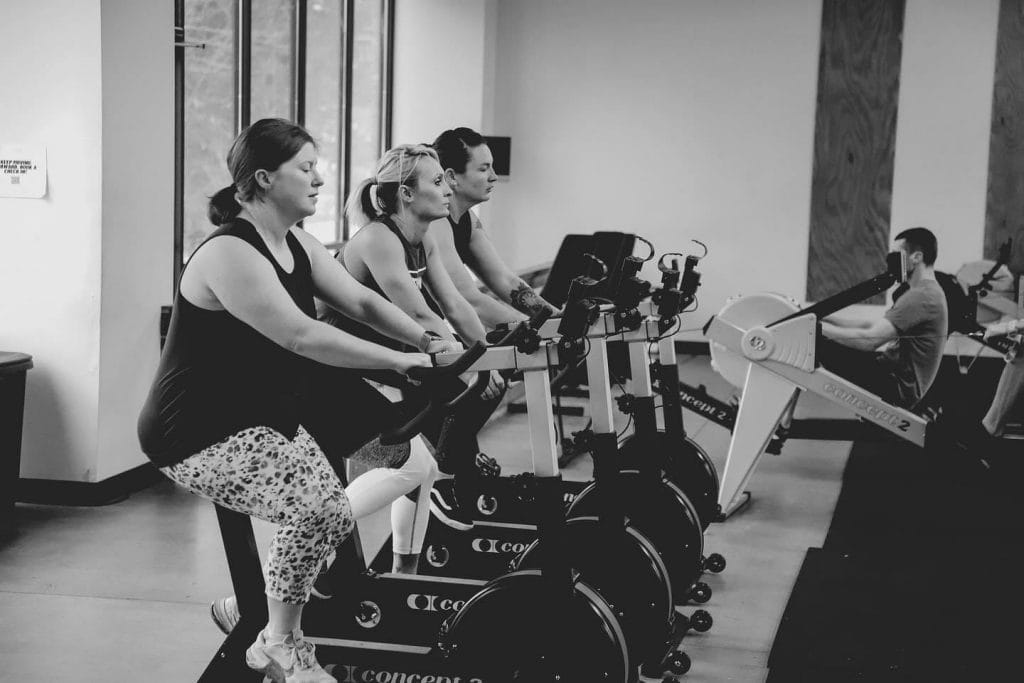CrossFit as a sport has come a long way since the early days. It’s become very mainstream and often confused for what’s taught in gyms around the world. I think even some of the gym owners themselves are confused.
There is a very clear difference between CrossFit from a GPP standpoint, and that of the sport. The demands on the body are completely different. I think far too often critics of CrossFit fail to acknowledge or truly understand the difference and that’s why it’s constantly bashed. Injuries and fatigue exist in every single sport and CrossFit is no different. However, in my opinion, CrossFit as a methodology when programmed correctly for your gym population, has the greatest benefit for the everyday person. Let’s talk about some key differences between the two.
Absolute Strength
Absolute strength is something that should matter to everyone. As we age, every decade, we lose close to 10% of our muscle mass IF we don’t life weights and strength train. Whether you’re training for the sport or everyday life, strength is important. The difference here is the type of strength being trained. CrossFit for GPP is focused on functional strength as we age. Can you work the muscles which properly allow you to sit, stand and walk with good posture? Can you pick heavy things up from the floor, like a suitcase and place them into and overhead bin on a plane? Can you carry 4 grocery bags up 3 flights of stairs if the elevator in your building is broken? This is the kind of strength we focus on when training the general population.
When training absolute strength for the sport, the demand is MUCH greater. The idea is to lift the heaviest possible loads in certain events, or heavy weights for higher repetition which will challenge your structural integrity. The movements tested in the sport, are not entirely necessary in my opinion for the general population. I love squat snatches but for my 55 year old mother, performing a squat snatch isn’t as “functional”. Having her pick up 2 kettlebells 8-10 times (kettlebell deadlift) and have her carry them for 100-200′ is much more functional. I think understanding and knowing who you’re training and what the goals are, will dictate what kind of movements should be programmed for your population. Please spare me the “we program for the best and scale for the rest jargon.”
Aerobic and Anaerobic Endurance
Another area where training for sport versus GPP differs immensely is in the aerobic and anaerobic training. Training with high intensity for short durations is good. Training with low intensity for longer durations is important. The difference here lies in the sheer volume needed. In my opinion, the average person who steps into my gym should be coming in anywhere from 3-5 times per week (on the low and high end). One to two of those sessions should feature some form of relative “high intensity” training for 10-20 minutes which is going to challenge the lungs and the circulatory system, The rest of the time should be spent on strength training, aerobic capacity, skill development and mobility. For ALL of my clients I stress movement in the form of walking and hiking. We try to help them set STEP GOALS. I think when added into the formula above, you’ll make a very healthy and capable human physically.
Speaking from experience the sport is much different. The difference lies in the total volume and time spent in different heart rate zones. In a sport like CrossFit the demand to move at top speed, under constant duress to shave milliseconds off of your time in order to win an event becomes paramount. This equates directly to the amount of “work” you put in during the off season. I know people who used to spend hours and hours per week on the assault bike and rower doing puke inducing sprints as well as the necessary but boring slower work required to build their overall capacity. In addition, the combination of weights and gymnastics into the fold upped the intensity and their heart rate. The propensity of injury here, for an untrained novice, is what most CrossFit haters like to point to. As I mentioned earlier context is everything and for gyms with a good grasp on how things should be done, this should not be a problem. It definitely isn’t a problem at our gym.
There are many other areas of focus such as exercise frequency, movement selection – basic versus high skill – which we can go deeper down the rabbit hole but the point of this article was to make a very clear distinction and delineation between CrossFit as a sport versus CrossFit for the general population. The demands of the sport in terms of time commitment to training, weights lifted, movement selection and more are FAR greater than what is required for the general population to get fit and healthy.
A well written program for the general population with the right movement selection (20-25 movements) mixed in with lots of walking 3-5x per week will lead to massive physical changes that would benefit 100% of the population. Don’t let uninformed influences or CrossFit haters who have no understanding of the difference between the two skew your view.
I hope this helps with your perspective on CrossFit. Want to know more about how we train CrossFit at WOTOWN? Book a Free Intro here.

